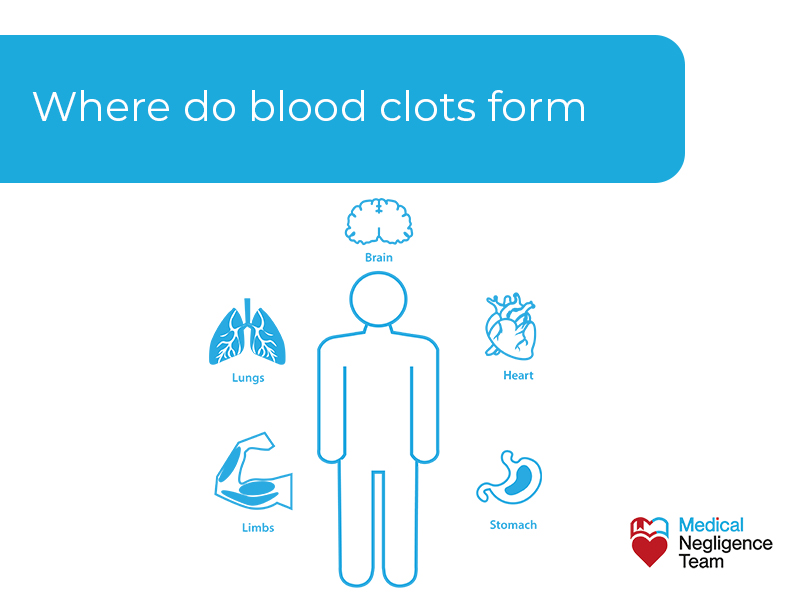Blood clot negligence is when you suffer damage to your health due to a failure to diagnose or treat a blood clot.
When you present at the hospital, clinic, A&E or GP surgery, you expect the best of care. You do not expect medical negligence and to suffer the effects of a blood clot.
Recognising the symptoms of a blood clot or the potential of one must be high in every doctor’s mind.
When a patient in a vulnerable group shows symptoms of suffering a blood clot, immediate action is needed.
Blood clot negligence can lead to permanent paralysis, stroke, brain injury and even death in some cases. You should not suffer blood clot negligence and its effects if the doctor does their job properly.
A No Win No Fee medical negligence solicitor will take your case and fight the compensation claim for blood clot negligence.

Table of content
What is a blood clot?
A blood clot is a semi-solid pocket of blood that forms in the veins or arteries. You can have a single blood clot or many of the gel-like particles form at a time.
In most instances, the blood clots will dissolve on their own and will not do any harm. The blood clots that do not clear are the dangerous ones and, if left untreated, do a lot of damage.
Blood clots can form anywhere in the body. In medical terms, a blood clot is known as a thrombus, and a blood clot that does not move is called a thrombosis.
When the thrombus or blood clot moves through the veins, it is termed an embolism. Embolisms are very dangerous as they can travel to the heart, lungs or the brain.
Knowing how to identify a blood clot is key to treating or preventing its damaging effects.
What are the symptoms of a blood clot?
The symptoms of a blood clot range from pain and bruising to weakness and shortness of breath.
Blood clot symptoms depend on where in the body the clot is, and your examining doctor should know the signs when you present.
Blood clots can form in the
Each area has its own symptoms and depending on where the clot is, some are more severe than others.

Symptoms of a blood clot in the brain
Symptoms of a blood clot in the brain can be constant and piercing headaches. Depending on where the clot in the brain is, it could affect your speech, sight and sense of smell.
You may also find it difficult to move, have paralysis down one side or limb, and many people suffer seizures.
Symptoms of a blood clot in the heart
Symptoms of a blood clot in the heart include pain across the chest, and sometimes the pain feels as if the chest is being crushed. The symptoms mirror those of a heart attack, with shortness of breath and pain down the left arm.
Other symptoms include sweating; in some cases, the sufferer may pass out or be difficult to rouse.
The symptoms of a blood clot may be similar to a heart attack but should not be ruled out when treating a patient.
A blood clot patient may also be at risk of having a heart attack, and this should be taken into account, along with the symptoms.
Symptoms of a blood clot in the lungs
Symptoms of a blood clot in the lungs will affect how you breathe, and sudden breathlessness is often the first sign of a blood clot.
Other symptoms are coughing up blood and chest pain. The chest pain may worsen when you breathe or lie down.
Many patients will experience an irregular heartbeat or one faster than normal.
Symptoms of a blood clot in the limbs
Symptoms of a blood clot in the limbs are pain, bruising and paralysis in the leg or arm. The area where the clot forms may feel tender to the touch and is often quite swollen.
Red patches on the skin and a feeling of warmth in the area are other symptoms of a blood clot.
